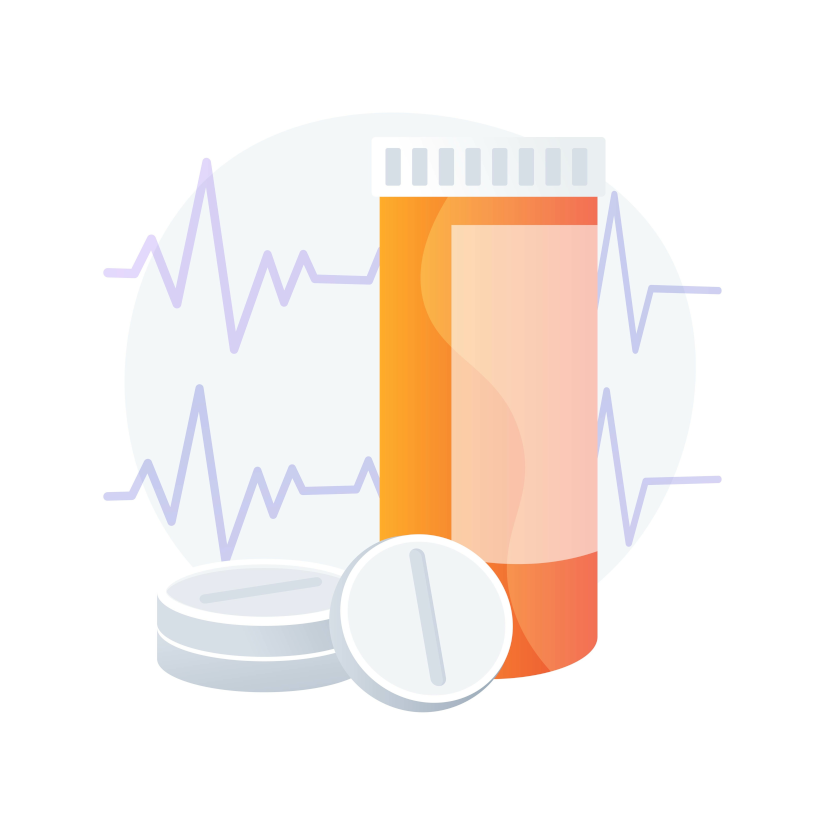Anytime you’re experiencing significant amounts of pain, you likely have only one priority: finding a way to make the pain stop. If the pain is bad enough, you probably won’t pay too much attention to exactly how the pain is alleviated. The “how” doesn’t feel nearly as important as the end result.
Knowing the Difference Between Painkillers
That’s perfectly understandable. Nevertheless, it’s important to educate yourself about pain medications before you find yourself needing—or abusing—them.
For example, here’s a pop quiz: Do you have a good sense of the difference between hydrocodone, Vicodin, oxycodone, and OxyContin? Is one of them safer than the others? Do they all work in the same way?
Unless you’re a medical professional, odds are pretty good you can’t confidently separate one from another. We can help.
A Note on Drug Naming Conventions
If you look again at the four drugs named above, you’ll notice that two are capitalized and two are not. That’s a clue for how to sort them.
Vicodin and OxyContin are brand names. Hydrocodone is the active ingredient in Vicodin and oxycodone is the active ingredient in OxyContin. Think of it this way: ground beef is the primary ingredient in a hamburger, but you can buy a hamburger under any number of brand names—including but not limited to those represented by golden arches, a shiny crown, and a red-headed girl.
For our purposes here, we’re going to set aside the brand-name drugs and focus on hydrocodone and oxycodone.
Hydrocodone and Oxycodone are Painkillers
The next important thing to know is that hydrocodone and oxycodone are both members of the drug class known as opioids. That word is probably familiar to you because the opioid crisis in the United States is ongoing. The crisis has been difficult to overcome because it is all too easy to become addicted to opioids.
While hydrocodone and oxycodone are both very effective painkillers, they can also provide a kind of euphoria that a user can come to crave. And once the cravings start, it is a short step to misusing the drugs.
That misuse generally involves taking too much of the drug too often. That, of course, requires an ongoing supply—which may lead to “doctor shopping,” prescription forging, theft, or finding an illegal source.
Meanwhile, the opioid is working against your body. As you develop a tolerance for the drug, you need more and more to get the same effect. And all the while those good feelings are being replaced by serious—and seriously dangerous—side effects.
Those side effects include (but are not limited to):
- Drowsiness and/or confusion
- Nausea and/or constipation
- Slowed breathing, which can lead to hypoxia—meaning too little oxygen is reaching the brain—which in turn can lead to:
- Falling into a coma
- Suffering irreversible brain damage
- Death
Those and other side effects will eventually fully replace any feelings of pleasure an opioid may have been providing when you first started taking it. And so the logical thing to do would be to stop taking the drug now to put all of these negative impacts behind you—or to prevent the more serious possibilities from upending (or simply ending) your life.
The trouble is that opioids won’t let you go that easily.
Ending Opioids Comes With Withdrawal Worries
Because your body and brain are now accustomed to—even dependent on—a steady supply of opioids, getting off the drug can be extremely difficult. If you try to quit “cold turkey” on your own, your chances of success are pretty low.
That’s because withdrawal symptoms can be brutal. Those symptoms can include (but are not limited to):
- Extremely powerful cravings for the drug that are hard to resist
- Pain in your muscles and bones
- Ongoing diarrhea and vomiting
- A loss of control over the movement of your legs
- Extreme cold flashes
At this point, you may well feel, as the old saying goes, like you are caught between the devil and the deep blue sea. You desperately need to quit abusing opioids—and you simply cannot overcome the rigors of withdrawal.
What now?
The Benefits of Residential Treatment
We’ve discussed how difficult it is to give up opioids on your own. But giving them up is, in fact, possible—especially if you get help in a fully-accredited residential treatment facility.
What can you expect in residential treatment? First and foremost, you will go through medically supervised detoxification. Your withdrawal symptoms will be carefully monitored to minimize your discomfort.
Detox is followed by a period of rehabilitation that includes both individual and group therapy. In therapy, you will learn about resources and strategies that can help you maintain your sobriety once you leave the treatment center. Therapy also provides an opportunity to address any co-occurring mental health disorders that may underpin (or have been made worse by) your substance use disorder.
Your access to support doesn’t end after residential treatment. Bel Aire Recovery Center is committed to a continuum of care—meaning we are ready and able to provide support and resources to help you get through the difficult early days of recovery. And we are here to help if you experience a relapse. You can rest assured that you always know where to find assistance if you need it.
The Time to Get Help is Now
If you are struggling with opioids, don’t wait to get help. We are ready to provide compassionate, personalized, evidence-based care that will help you reclaim your life.




